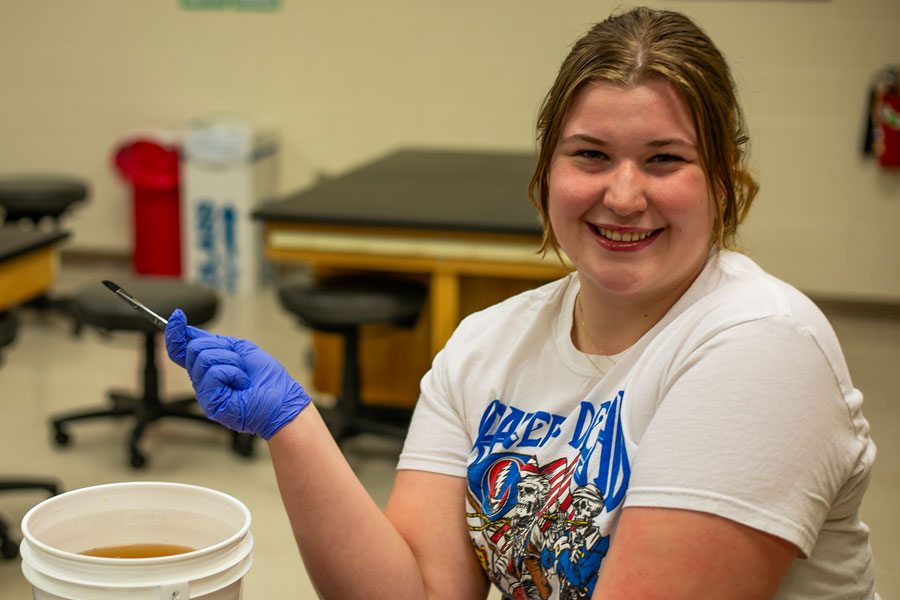Kaylee McCracken ’24
Biology major

Kaylee McCracken’s passion for the environment stems from her childhood. She grew up in New Jersey near the beach, where the residents of her community, including Kaylee, pushed to protect the beaches.
Kaylee’s role in the effort was serving as a turtle advisor with her local yacht club and law enforcement.
“We had sea turtles that would lay their eggs on our beach, so they employed people to make sure everything was good on the beaches. And we made sure people weren’t smoking or littering.”
As a result, Kaylee’s career goal is to work in the marine biology field. She’s also interested in air and water pollution and sustainable living. So, it was only natural that she wanted to focus her directed research at Pitt-Bradford on microplastics – miniscule pieces of debris from plastic waste -- and how they affect marine organisms.
Kaylee wanted to base her research on the local environment, so she’ll be testing fish from one of the local reservoirs.
“It’s always fun to do stuff that you’re close to,” she said.
She first became interested in a directed research project when her fellow friends in the STEM community at Pitt-Bradford recommended the experience to her. Directed research projects allow students to design and carry out research on a topic of their interest under the direction of a faculty supervisor. She will be conducting her research throughout the summer, and concluding in August.
“I’ve had a couple of friends who have done directed research with Lanre [Morenikeji, assistant professor of biology], and they said it was a good learning experience. You kind of understand a lot more going into other classes because you’re like, ‘Oh, I get this, I already did this.’”
She added that she wanted to do the research project because it sounded fun. “I thought, why not, I’m going to be here over the summer anyway because I’m working here, so I might as well do something.”
Kaylee is most looking forward to the interactive experience directed research offers. “I am excited to sample the fish myself because in most cases in classes, you aren’t taking the fish’s blood or doing the sampling yourself, it’s just provided for you. So, I am excited to do the process from start to finish.”
She also is eager to learn how to use gas chromatography and mass spectrometry to determine the presence of microplastics in the fish. Gas chromatography is used to separate and analyze compounds to be vaporized without decomposing. Mass spectrometry is then used to measure the mass-to-charge ratio of molecules present in a sample.
“I’m excited to do that because I’ve done a lot in classes, but I’ve never done anything with gas chromatography and mass spectrometry, so I’m excited to see how it works.”
The most anticipated part of her research, she said, is the final product of her work, compiling all her research into one final paper, which she hopes will get published.
“It would be amazing to get my research published,” she said, noting that her mother, who had been an environmental science major in college, had her research published, which inspired Kaylee.
“She got published as a senior in college, so my goal is to get published as a junior.”